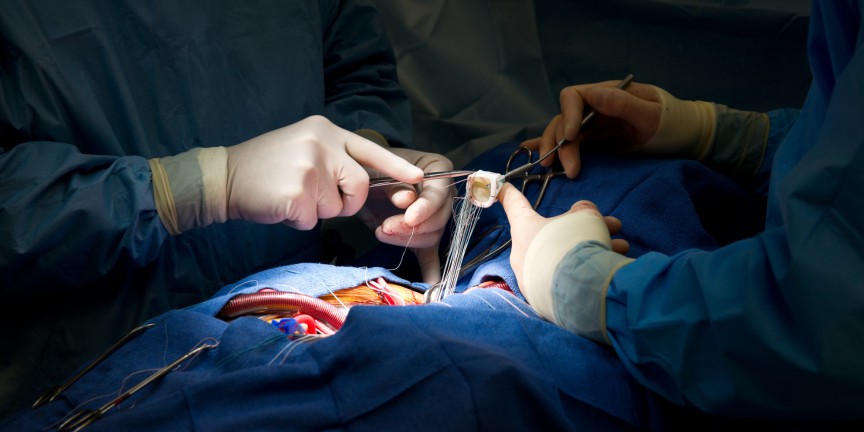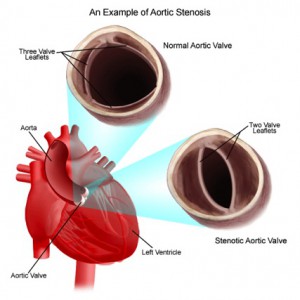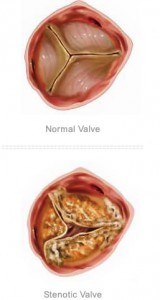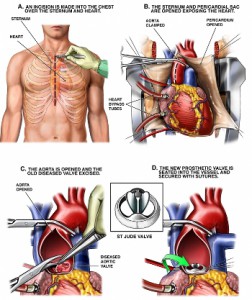Aortic valve stenosis is usually the result of stiff, fused, inflexible valve leaflets, which limits or blocks the blood flow. Aortic valve stenosis occurs when calcium is deposited on the valve leaflets, limiting their mobility. Stenosis can occur in patients with a normal (3 leaflets) or a bicuspid (2 leaflets) aortic valve.
Severe aortic stenosis occurs when the aortic valve does not open properly. This forces your heart to work harder to pump blood throughout your body. Over time, the heart muscle weakens. This affects your overall health and keeps you from enjoying normal daily activities. Left untreated, severe aortic stenosis is a very serious, life-threatening condition, which may lead to heart failure and increased risk for sudden cardiac death.
Causes
Severe aortic stenosis is often not preventable and may be related to age; buildup of calcium deposits on the aortic valve (stenosis), which causes narrowing; radiation therapy; medications; a history of rheumatic fever; or high cholesterol.
Symptoms
Signs and symptoms of severe aortic stenosis can include:
- Chest pain or tightness
- Feeling faint or fainting with activity
- Dizziness
- Fatigue
- Shortness of breath
- Heart palpitations
- Heart murmur
Treatment
Patients without symptoms can be observed until symptoms develop. Patients with mild aortic stenosis do not require treatment or restriction of activity. Severe aortic stenosis in the elderly is best treated with replacement aortic valve replacement processed from pigs (porcine) or cows (bovine) are called bioprostheses. Bioprostheses are less durable than mechanical prostheses but have the advantage of not needing life-long blood thinning (anticoagulation) medication to prevent blood clots from forming on the valve surfaces. Bioprostheses do not last as long as mechanical valves but have other advantages that make them particularly good alternatives in the elderly.
In high risk patients a new procedure, Trans catheter aortic valve implantation (TAVI), may be an option. In lower risk patients, this procedure is not indicated. Another procedure, Aortic valve balloon valvuloplasty has only minimal (temporary) benfits and is associated with high risks and complications, thus not recommended for most patients.




